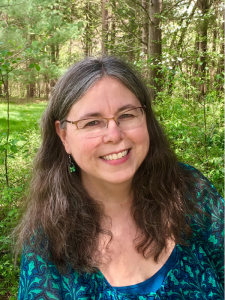Guest Blog from Stephanie Buckwalter, 11/11 Webinar Speaker
Writers write. Good writers read. And I’m not talking about Twitter and your favorite blog. I’m talking about the classics. Read them. Study them. Analyze them.
As you learn how the classics are put together, you learn to see the structure of good writing. Here are a few things you can look at within the text:
- Themes
- Characters
- Plot
- Imagery
- Allegory
- Symbolism
- Metaphors
- Allusions
- Archetypes
- Setting
- Narrator point of view
To study the concept of story, you can analyze using tools like:
- Master Plot Summary (identifying the 32 plot points)
- The Hero’s Journey (12 or so stages of a character’s path to change)
- Break the story into three acts and analyze what happens in each act to move the story along
There are many ways to look at a story. The point is to be deliberate in your analysis with the aim of mastering whatever it is you are “seeing” in the story.
Leo Tolstoy once said there are really only two stories in all of literature: a man goes on a journey, and a stranger comes to town. If that’s true then you’re probably looking for something deeper than a story line for great literature.
One of the best ways to “see” a story is to look for themes. This forces you to pay attention to the story as you try to follow the themes throughout. Here are some examples of *themes from classic stories:
- The Hunger Games by Suzanne Collins: love, strength and skill, appearances, competition and sacrifice
- The Wizard of Oz by L. Frank Baum: courage, lies and deceit, coming of age, family
- The Jungle by Upton Sinclair: society and class, suffering, foreignness and the “Other”, language and communication
- The Call of the Wild by Jack London: knowledge and wisdom, respect and reputation, primal actions, fate and free will, loyalty
- The Sun Also Rises by Ernest Hemingway: men and masculinity, identity, exile, warfare
- The Glass Castle by Jeanette Walls: society and class, identity, freedom and confinement, perseverance, family
- The Most Dangerous Game by Richard Connell: violence, strength and skill, man and the natural world, fear
- Life of Pi by Yann Martel: spirituality, suffering, science, fear, mortality, madness
When you take the time to trace a theme through a work, you begin to see how it can be reinforced by some of the other elements: setting, imagery, mood, symbols and so on.
Nonfiction writers can benefit from studying and using themes, too. For example, I wrote a book about the life and work and Jack London for a school library book publisher. About ten years later, they wanted it reworked so they could have a new book.
Jack London was an interesting person who went on a lot of adventures in his lifetime. Each time he did, the adventures changed him a little bit. Over time, it changed his writing, too.
One of the ways I reworked the book was to set up the theme of a kaleidoscope. I likened each chapter in London’s life to a turn of the kaleidoscope. Throughout each chapter in the book, I made some reference to a kaleidoscope, how it works or how the image had changed. Even though London’s life took a lot of turns, the reader was able to keep track through the turns of the kaleidoscope.
If you want to study literature but don’t quite know where to start, I recommend Shmoop.com’s free study guides. The contributing writers are high school teachers and college professors. They do a good job of laying out the themes, discussing the characters and providing their own analysis. The content is for high school and college students so it can be a bit irreverent at times.
If you are writing a piece that requires history or historical background, Shmoop is good for that, too. You can get an overview, timeline, important people and an analysis of the time period including race, culture, economy, politics, religion and environment. The site is well worth exploring.
Next time you pick up a good book, do a little analysis. You’ll be a better writer for having done so.
*The themes for each story listed above are taken from Shmoop.com study guides for literature.

Stephanie Buckwalter writes nonfiction for the school library market and special needs families. She is on the CCWF Board of Directors for Technology. She loves writing, researching and being outdoors in nature. Her website for special needs parents is www.artofspecialneedsparenting.com
